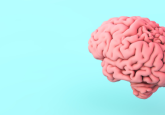Functional MRI reveals how time in space changes our brains

Our brains are optimized to live with gravity, but how does it adapt to the different laws of physics experienced up in space?
Researchers at the University of Antwerp and the University of Liège (both Belgium) have identified areas of the brain that adapt to being in space for an extended period of time, with some of these changes remaining for up to 8 months after returning back to Earth. This finding could help prepare astronauts for longer space missions.
For most of us, we’ll spend our entire lives under gravitational force; our brains have incorporated this physical law to allow us to function optimally on this planet we call home. This means we can throw a ball and predict where it will land (for those with good hand–eye coordination), and we don’t just let go of objects because we intuitively understand that it would fall.
So, how do our brains respond when we’re not surrounded by the familiar gravitational force of 9.81 m/s2?
The researchers of this study used functional MRI (fMRI) to investigate how 14 astronauts’ brains changed after spending 6 months in space. The researchers utilized resting-state fMRI, meaning no specific task was performed by the astronauts, to investigate default brain function. They collected data before the astronauts’ six-month mission to the International Space Station and several times after returning for a period of 8 months.
 1 million more blood cells destroyed every second during space travel
1 million more blood cells destroyed every second during space travel
Astronauts (and future space tourists!) could be screened for health conditions affected by anemia, after a study reveals ‘space anemia’ prevails even once passengers are safely back on Earth.
fMRI revealed that functional connectivity changed in specific regions of the brain. Functional connectivity is a marker of how activity in different areas of the brain is correlated.
“We found that connectivity was altered after spaceflight in regions which support the integration of different types of information, rather than dealing with only one type each time, such as visual, auditory or movement information,” explained Steven Jillings (University of Antwerp), the first author of the paper. “Moreover, we found that some of these altered communication patterns were retained throughout 8 months of being back on Earth. At the same time, some brain changes returned to the level of how the areas were functioning before the space mission.”
Decreased connectivity was observed in the posterior cingulate cortex, an elusive area of the brain potentially responsible for environmental monitoring, and the thalamus, associated with adaptive decision-making and working memory. There was increased connectivity in the right angular gyrus, responsible for verticality perception and action–outcome monitoring. Additionally, a decrease in connectivity of the bilateral insular cortex was identified, associated with body awareness and detecting noticeable events, but this change reversed over the course of follow-up fMRI scans.
Changes to how the brain functions that remain after returning to Earth suggest that a learning effect takes place while spending an extended period of time in space; impermanent changes indicate that some acute adaptations occur to cope with and adapt to the different levels of gravity.
Understanding how space affects astronauts and changes the brain may be helpful in selecting astronauts in the future and monitoring their brain health during and after space missions.
Raphaël Liégeois (University of Liège), a future European Space Agency (Paris, France) astronaut commented, “understanding the physiological and behavioral changes triggered by weightlessness is key to plan human space exploration. Therefore, mapping changes of brain function using neuroimaging techniques as done in this experiment is an important step to prepare the new generation of astronauts for longer missions.”





